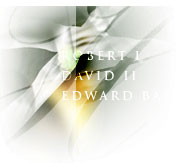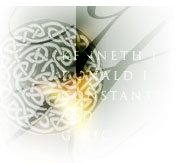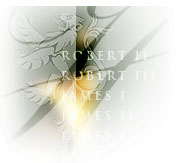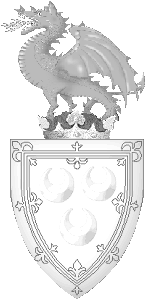|



Sept Alliances of
the Seton's
In Scotland, beginning
from the age of the Canmore dynasty and continuing until the
Stuart's,
septing was
the alliance of a smaller family with that of a larger more prominent or powerful
one usually within the same territorial juristiction. Similar
in many ways to an Allegiance to the Crown, Septing
was not generally brought about by marriage, since the latter
brought mutual blood ties between the two families. Septs also had
to abide by existing alliances stuck by the House to which they were forming
an alliance with.
The practice of
septing
was not new or isolated to Scotland, throughout Europe and indeed
in every cultural entity there have existed family alliances based
upon political alliances, for protection, or other interests.
In
Scotland, the old the practice was also used to associate oneself or
family with a Great House for elevation of social stature. In modern
times this is found to be useful for individuals or families
which did not originate in Scotland, yet wish to associate themselves
with a Scottish House to obtain a Scottish identity. The process
of Septing today still involves a formal Pledge of Allegiance,
though the old practice of the mingling of blood, is one which is no
longer used.
Some Ancient Septs of
the Setons
Adinston
of that Ilk
The Family long been the Hereditary Armour Bearers to the Head of
House of Seton until the Seton forfeiture.
Stenhouse of Seton Village
The Family long resided in the village of Seton, now long erased from
existence, and held their homes hereditarily under the Lords Seton and the
Earls of Winton until after the Seton forfeiture of 1715. They were
at last removed from their ownership and presence on the Seton lands by
Alexander MacKenzie who had acquired the lands of Seton fraudulently at
auction, purchased after the Bankruptcy of the York Buildings Company who
had acquired the estate and barony of Seton from the Crown after the Seton forfeiture.
Pringle of Greenknowe
The Family long leased the Tower at
Greenknowe from the Seton's of Touch, who maintained the lands of
Greenknowe and Gordon in the Borders region, before it's later acquisition
by them over a century after it's construction. They remained long
in the service of the Seton's of Touch and Tullibody of Stirlingshire who
were Hereditary Armour Bearers to the King.
de Quincy of Tranent
The Family that remained in Scotland
after the Wars of Independence in the 14th century, which brought about
the demised of the de Quincy family in Scotland, leased the Tower of
Tranent for a time from the Lords Seton, as the Tower and the Barony of
Tranent were previously a possession of the de Quincy's, along with that
of Winton in nearby Pencaitland, and which all passed to the House of
Seton who had generations earlier married a de Quincy heiress.
Falside of Tranent
The Family were originally a branch
of the House of Seton, which took it's name from the estate of Falside.
A younger son of the early Seton's of Seton married the heiress of Falside
and took that name and carried on that House. As a result, of
course, the family were strongly attached to the Seton's and known for
their defense of the town of Tranent during the many wars in the region.
James Seton of Falside was noted during the funeral of Chancellor Seton,
1st Earl of Dunfermline in 1622.
Vallance of Tranent
The Family long leased the Tower at
Tranent, and noted for their support of the Lords Seton, before acquiring
the Tower outright.
Reid of Winchburgh
The Family long maintained the
Castle and gardens of Niddry, West Lothian, for the Lords Seton and Earls
of Winton. What became of the Reids afterwards remains a cloudy
history, though they had maintained a presence in Winchburgh after it's
acquisition by the Hope Family, to which the 3rd Earl of Winton sold
Niddry Castle, along with Winchburgh and Kirkliston, after his son's
imprisonement for invovlement in Jacobite activities. It appears
that the Reids of Winchburgh also emigrated to Ulster, Ireland, in the
early part of the 18th century. There is also a noted marriage which
brought about the family of Reid-Seton's.
Modern
Sept of the Setons
Jarosz,
Baron Kirkliston
The Family
originally from the Carpathians, in Hungarian Transylvania. In 2002
Andrew Jarosz (Jaross otherwise) had acquired the former Seton feudal
barony of Kirkliston (the barony lands lies on the Almond River, near
Kirkliston village) by Feu Assignation from Adrian
Hope of Hopetoun,
Marquis of Linlithgow. Thereafter he has petitioned for permission
to be considered as a Sept of the House of Seton, being a Baron
officially recognized on behalf of the Crown of Scotland, and the barony
of Kirkliston originally a Seton barony, re-granted in 1618 to George
Seton, Earl of Winton. The Jarosz's of Kirkliston may be
considered as modern Sept of the House of Seton.
|






